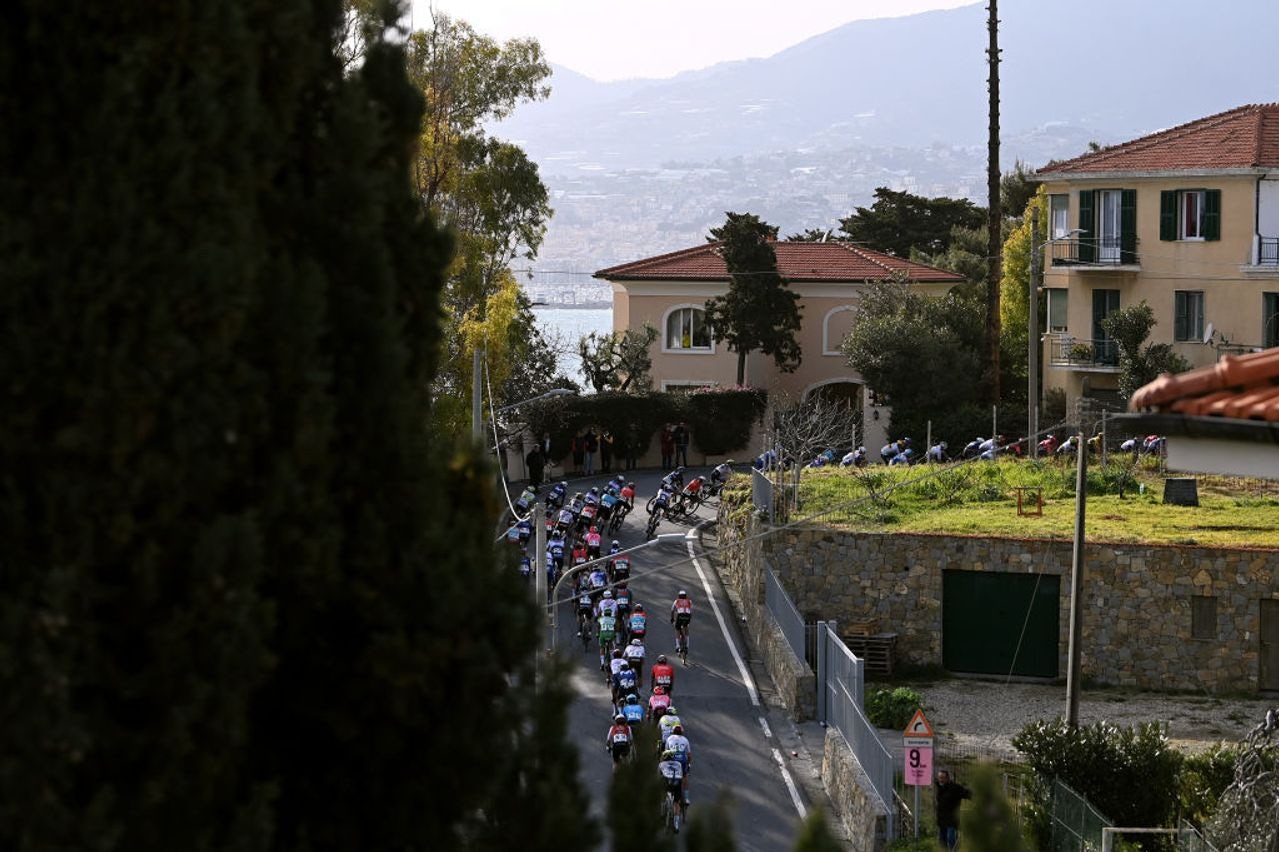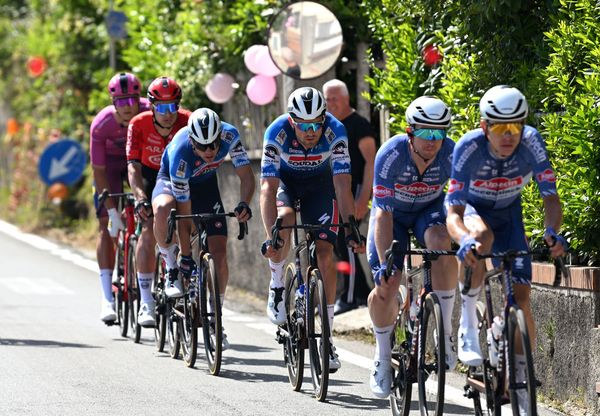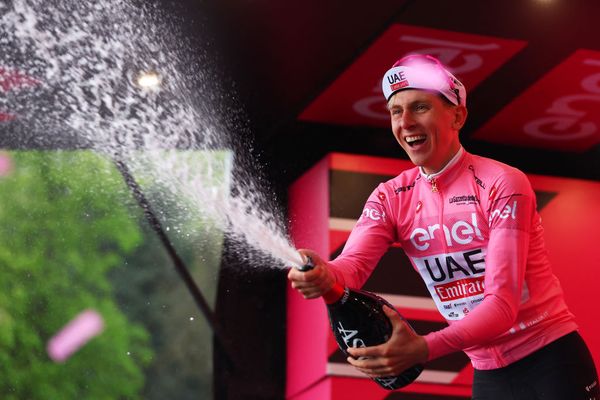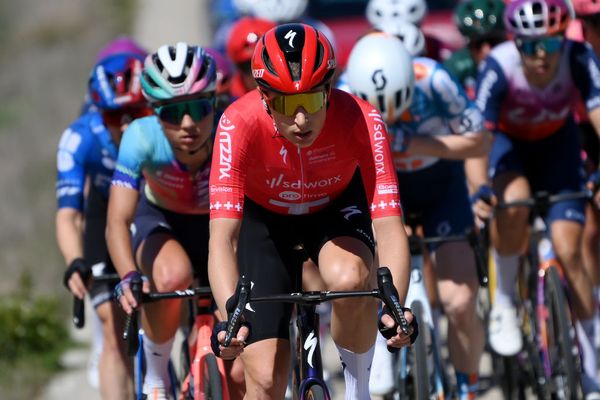A beginner's guide to Milan-San Remo
Everything you need to know about the route, history, and tactics of the first Monument of the Spring Classics season
GCN
The GCN team
© Getty Images
Milan-San Remo punches up some tricky climbs above the sea
Milan-San Remo marks one of the high points of the Spring Classics season: the first of cycling’s Monuments and a near-300km all-day affair culminating in a frenzied final 15 minutes.
Taking place on Saturday 16 March in Italy, there is only a men’s edition but it’s immediately followed by an equally significant women’s race, Trofeo Alfredo Binda, on Sunday 17 March.
Since its first edition in 1907 Milan-San Remo has marked the turning of winter to spring and the start of the much-anticipated Spring Classics campaign, where the European road racing season traditionally begins. The race holds the nickname La Classicissima di Primavera (The Spring Classic), or simply, La Primavera.
As well as marking a transition between seasons, Milan-San Remo also marks the first Monument – the five oldest and most prestigious one-day races on the calendar – of the year and the longest of the lot at a staggering 288km this year.
Unlike the other Monuments – Tour of Flanders, Paris-Roubaix, Liège-Bastogne-Liège and Il Lombardia – this race brings the sprinters into the equation, although there hasn’t been a bunch sprint since 2016.
Milan-San Remo history
The race’s inaugural edition in 1907 was plagued by poor weather and only saw 14 riders reach the finish in San Remo. Despite this shaky start, the race boomed in popularity and over the following four decades saw several Italian riders write their names into cycling’s coveted history books. Costante Girardengo, Giuseppe Olmo, Alfredo Binda, Fausto Coppi and Gino Bartali all took multiple editions of Milan-San Remo during these early years, propelling both themselves and the race into superstardom.
To maintain its reputation as one of the most prestigious Classics and uphold its rich, 115-year history, Milan-San Remo’s chief organisers have elected to send the riders on an almost identical route year after year. The race normally starts in the historic centre of Milan before heading south to the idyllic Ligurian Coast. It’s along this coastline that the race really begins to heat up, especially as the final two climbs – the Cipressa and the Poggio – draw ever closer.
Italy dominate the winners' list in this race with 51 wins from 114 editions. Several of their most accomplished riders also stand proud in the individual winners' list, like Coppi, who took three wins during the 40s, Bartali, who took four wins between 1939 and 1950, and Girardengo, who took a massive haul of six wins during the 1910s and 20s. None of these riders have amassed quite as many wins as the Belgian Eddy Merckx, however; he won this race a record seven times between 1966 and 1976.
Milan-San Remo route: the Cipressa and the Poggio
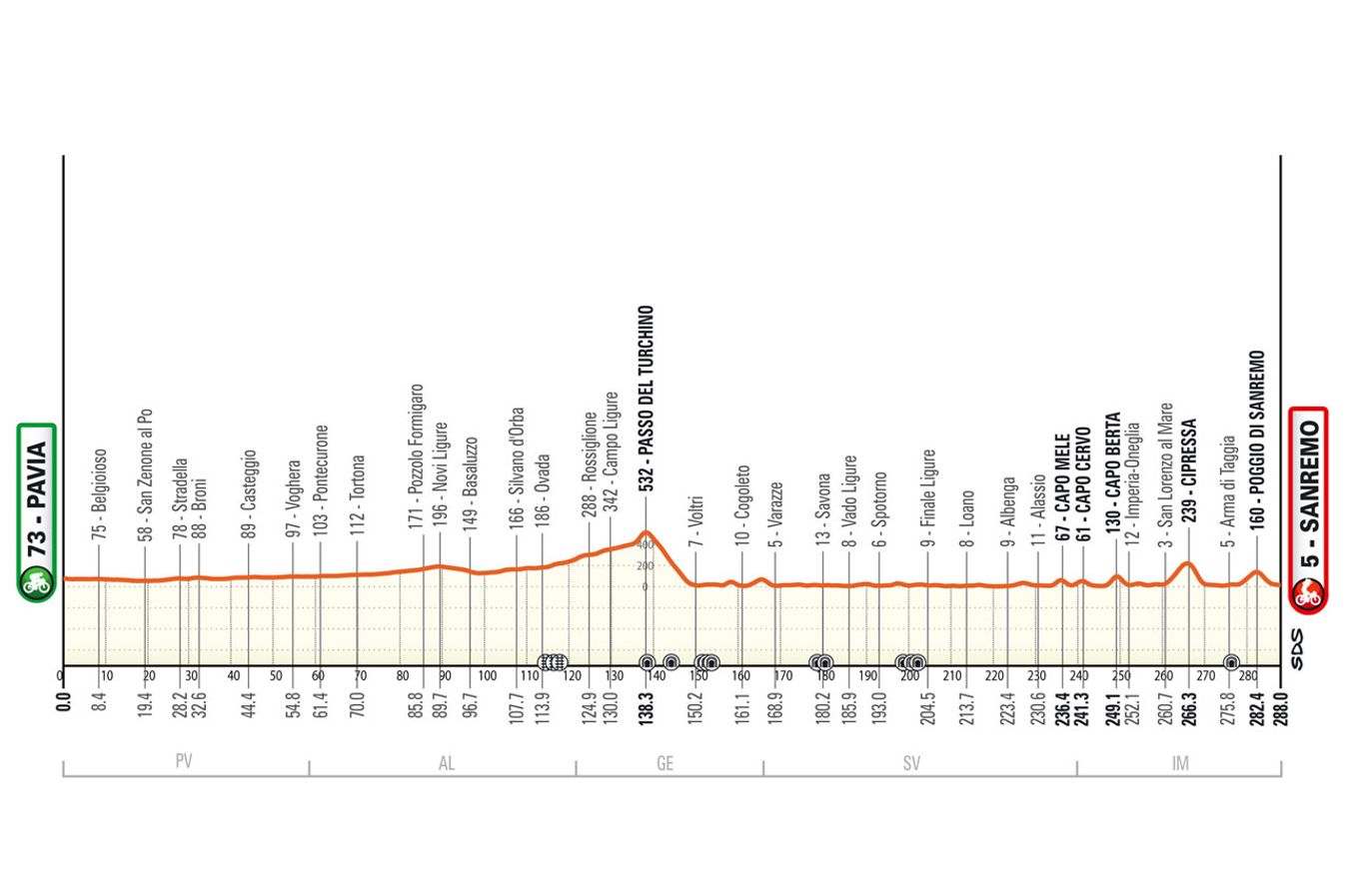
© RCS
The profile of the 2024 Milan-San Remo route
For the first time since 1965, this 115th edition of the route will start in the city of Pavia, just outside Milan, which normally only gets a brief cameo. A new, 44km flat section alongside the Ticino River follows before the route rejoins its usual parcours in Casteggio, and continues to crest the Turchino Pass before descending to the Lugurian coast.
The ‘Tre Capi’ trio of short inland climbs wake the legs before the Cipressa and the Poggio, which are the key features of the route. These two iconic climbs aren’t too much of a challenge in isolation, but when strung together and placed at the end of an almost 300km-long race, they become two of the toughest climbs that the riders will have to face during the Spring Classics season.
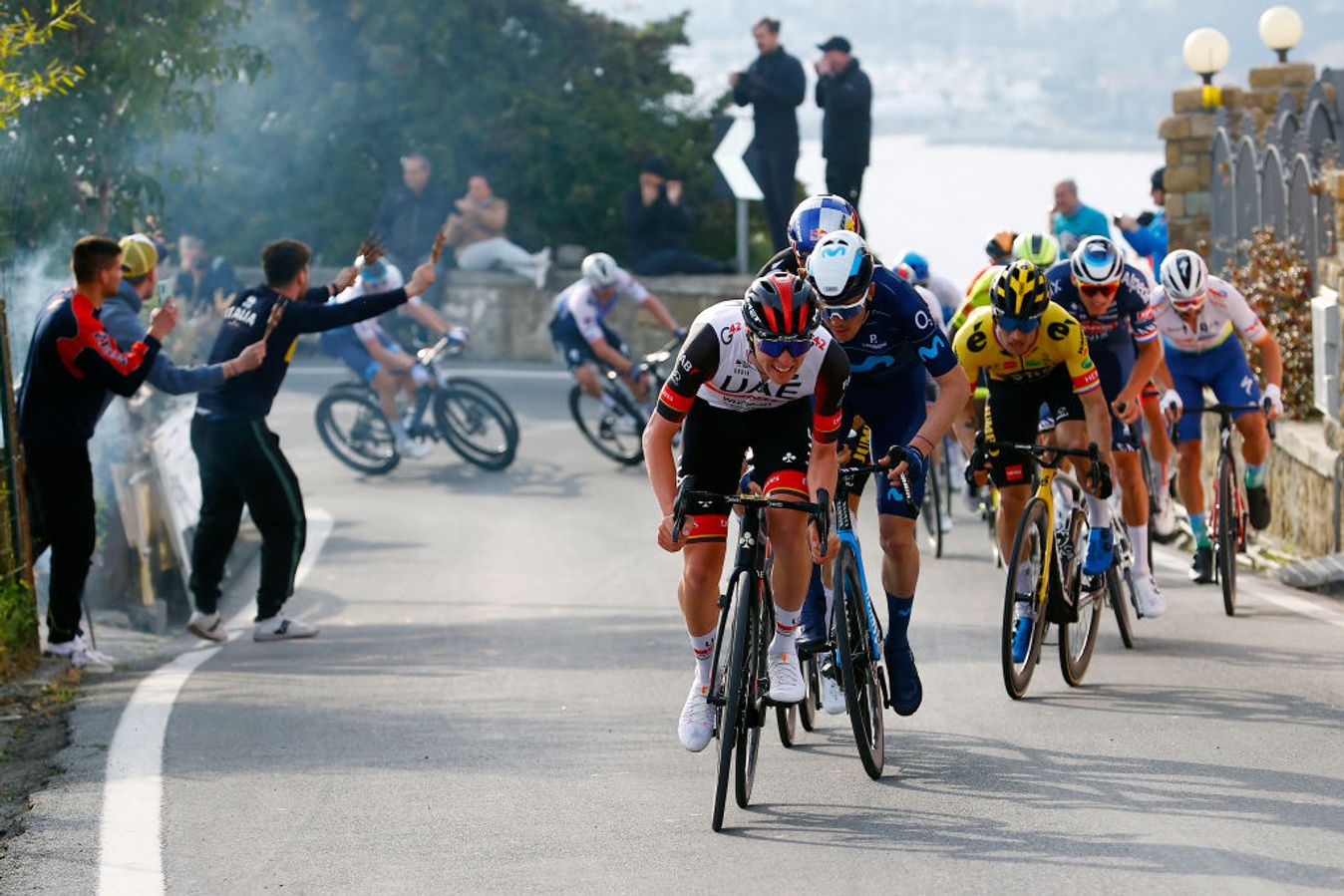
© Getty Images
The Poggio is where the attacks fly
At 5.6km long with a 4.1% gradient, the Cipressa is the harder of the two climbs but comes further from the finish, and so usually acts as the warm-up, or a launchpad for often-doomed attacks, rather than playing a decisive role.
The Poggio, on the other hand, is pivotal. Measuring 3.7km at 3.7% and coming within the final 10km, this is where we see the attacks fly and a select group of riders looking to spring away to prevent a bunch sprint. The descent can be equally decisive, with a steep drop into San Remo lined with technical bends. Amid the fireworks from the aggressors up and down the Poggio, it’s up to the sprinters’ to stay within touching distance and get back in before the pan-flat finish on the iconic Via Roma straight.
Milan-San Remo tactics and style
Due to its obscene length, Milan-San Remo is often described as a test of pure endurance. It’s also a big test of a rider’s ability to read a race and knowing when is the best time to spend or save their energy. As a result, it’s a race that tends to favour the more tactically astute riders of the peloton and those who can finish off a long, hard day in the saddle with an explosive final sprint. Mark Cavendish, who won in a thrilling finish to the 2009 edition, said, "It’s the easiest race to finish, but the hardest to win.”
A mostly flat race barring the two classic climbs, Milan-San Remo has the nickname of the ‘Sprinter’s Classic’ but in recent years has been won more often by all-rounders, with many of the same names featuring on the podium. Mathieu van der Poel took the victory in the most recent edition, counter-attacking a Tadej Pogačar-led move on the Poggio, while Matej Mohorič won in 2022, making his decisive move on the hair-raising switchback descent of the Poggio and leaving Pogačar, Van der Poel, and Wout Van Aert stranded in his wake.
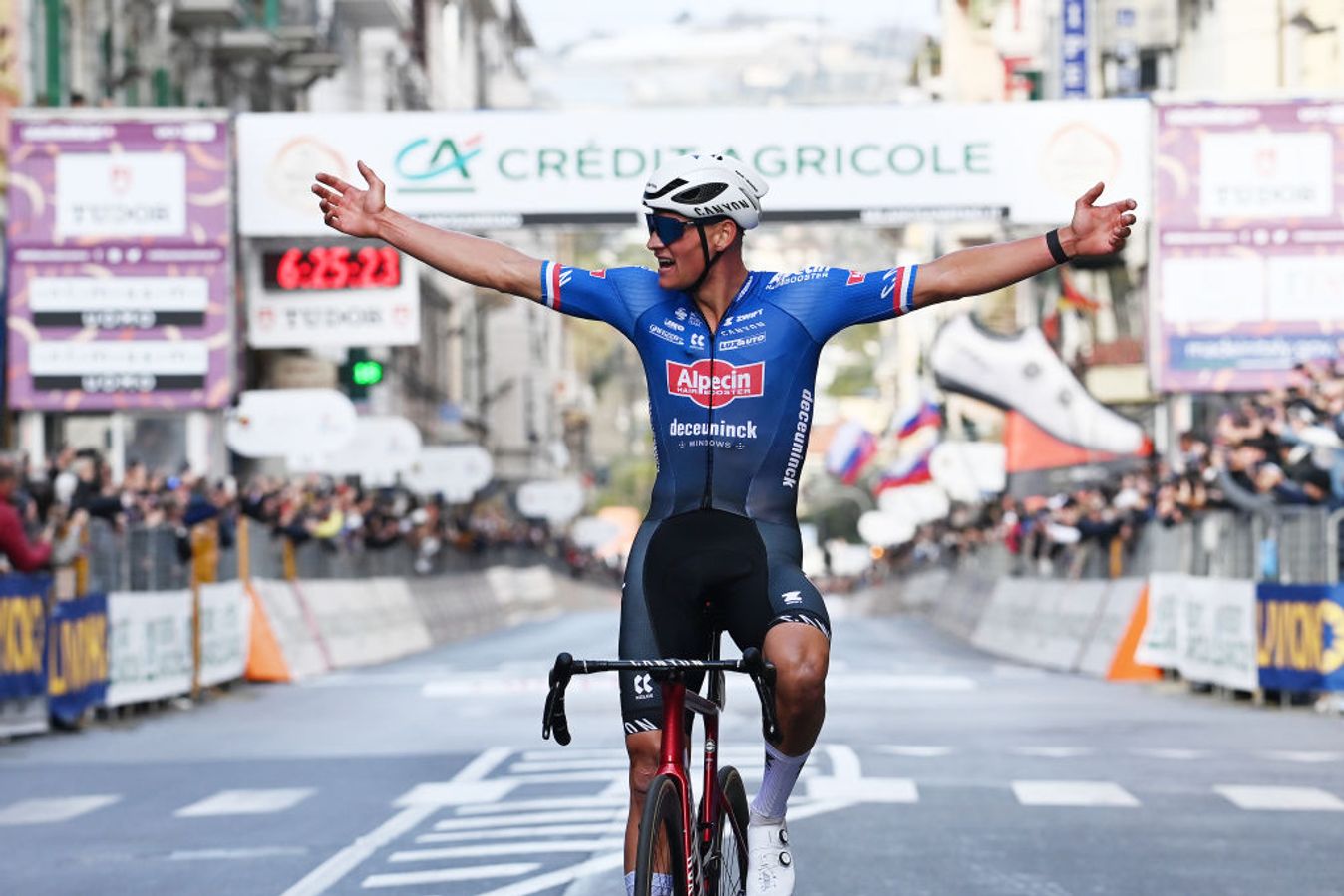
© Getty Images
Mathieu van der Poel won the 2023 Milan-San Remo with a solo attack
In recent years we’ve seen the race go the way of the attackers, with van der Poel, Jasper Stuyven (2021), Van Aert (2020), Julian Alaphilippe (2019), Vincenzo Nibali (2018) and Michał Kwiatkowski (2017) all winning after being involved in a critical attack on the final climb of the Poggio, which comes in the last 9km.
The last time the bunch made it to the finish en masse was back in 2016, when Arnaud Démare became the first Frenchman to win the race since Laurent Jalabert in 1995.
With several of the ‘Big Six’ likely to tackle La Classicissima again this year, we’re almost guaranteed a thrilling day of racing and a worthy victor at the season’s first Monument, regardless of the finish.
For more information on the Classics, from riders to latest news and results, see our dedicated Spring Classics Hub page.
